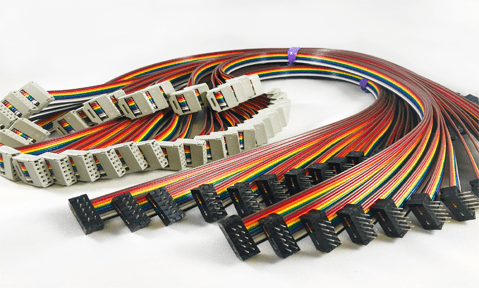The world of computing has been transformed by the Solid State Drive (SSD), which offers a significant performance boost over traditional Hard Disk Drives (HDDs) in data storage. SSDs have revolutionized the way computers read and write data, delivering faster speeds, improved durability, and greater reliability. They are increasingly becoming the preferred storage solution for personal computing, gaming, and enterprise-level applications.
This article will delve into the definition of an SSD, its functionality, the various types available, their pros and cons, and how they stack up against other storage technologies such as HDDs.
1. What exactly is a Solid State Drive (SSD)?

A Solid State Drive (SSD) is a storage device that is non-volatile and utilizes flash memory for data storage. Unlike HDDs, which rely on mechanical components like spinning platters and read/write heads, SSDs contain no moving parts, making them faster and more robust.
SSDs store data using integrated circuits and NAND-based flash memory, resulting in significantly faster access times compared to HDDs. This is because data can be accessed directly from memory chips, eliminating the need to wait for a mechanical process to retrieve it.
a. Primary Purpose
SSDs serve the same purpose as HDDs, which is to store the operating system, software, documents, media files, and other data. However, due to their high speed and performance, SSDs are particularly well-suited for performance-intensive tasks such as booting operating systems, gaming, and running applications that require rapid data access.
2. How does an SSD operate?

The primary distinction between SSDs and HDDs lies in how they store and access data. Instead of using spinning platters and magnetic storage, SSDs store data on interconnected flash memory chips. Here’s how an SSD operates:
a. Flash Memory
SSDs use NAND flash memory, a type of non-volatile memory that retains data even when the device is powered off. Flash memory consists of transistors that hold electrical charges, representing binary data (1s and 0s). The data is organized in cells, and the SSD controller manages how data is written, erased, and retrieved from these cells.
b. SSD Controller
The SSD controller is a crucial component that oversees all data operations within the SSD. It determines how data is stored, retrieved, and erased from the NAND flash memory. The controller also handles tasks such as wear leveling (distributing data evenly across memory cells), garbage collection (erasing old data to make space for new data), and error correction to ensure data integrity.
c. DRAM Cache
Many SSDs come equipped with a built-in DRAM cache that temporarily stores frequently accessed data, thereby accelerating read and write operations. Acting as a high-speed buffer between the system and the SSD, the DRAM cache improves overall performance, especially during complex data operations.
d. Types of Flash Memory
The flash memory utilized in SSDs comes in different types, primarily distinguished by how many bits of data each memory cell can store:
SLC (Single-Level Cell): Stores one bit per cell. It is the fastest and most durable but also the most expensive.
MLC (Multi-Level Cell): Stores two bits per cell. It offers a good balance of performance, durability, and cost.
TLC (Triple-Level Cell): Stores three bits per cell. TLC is more affordable but slower and less durable than SLC and MLC.
QLC (Quad-Level Cell): Stores four bits per cell. QLC offers higher storage density but at the cost of lower performance and durability.
The SSD has key components that impact its performance and reliability, despite lacking moving parts like HDDs.
NAND Flash Memory serves as the storage location for all data and is available in various performance and durability levels based on the type (SLC, MLC, TLC, QLC).
The SSD controller functions as the drive’s brain, overseeing data read, write, and erase processes, thereby influencing speed, reliability, and longevity.
The temporary storage of data for quick access is the role of the DRAM cache. While not all SSDs have DRAM, those without it tend to be more affordable with slower performance.
The interface links the SSD to the computer system, with SATA offering slower speeds but wider compatibility, and NVMe providing faster speeds through the PCIe bus.
There are several SSD types available, distinguished by form factor and interface, including SATA SSDs, NVMe SSDs, M.2 SSDs, and PCIe Add-in Card (AIC) SSDs.
SATA SSDs use the older SATA interface and are commonly found in the 2.5-inch form factor, offering compatibility with most laptops and desktop computers.
NVMe SSDs, using the PCIe interface, deliver significantly higher speeds than SATA SSDs, making them suitable for gaming, content creation, and performance-heavy tasks.
M.2 SSDs, available in both SATA-based and NVMe-based options, are popular for high-performance applications due to their compact size and fast speeds.
PCIe Add-in Card (AIC) SSDs are utilized in high-performance desktop and server systems, offering very high speeds and massive storage capacities as a PCIe card that directly plugs into the motherboard’s PCIe slot.
5. SSD Benefits
Because of their many advantages over conventional HDDs, SSDs are frequently chosen as the storage solution.
a. Enhanced Speed
SSDs boast remarkable speed due to their lack of moving components and direct access to flash memory. This allows for significantly faster read and write speeds compared to HDDs, leading to quicker boot times, speedier application loading, and overall improved system performance.
b. Robustness and Dependability
The absence of moving parts in SSDs makes them more resistant to physical shock, vibration, and extreme temperatures, resulting in heightened reliability, particularly in mobile devices like laptops and tablets.
c. Energy-Efficient Operation
SSDs consume less power than HDDs because they don’t require a motor to spin platters. This translates to longer battery life for laptops and other portable devices.
d. Noiseless Functionality
The silent operation of SSDs, attributed to their lack of moving parts, makes them ideal for quiet environments such as offices or home theaters.
e. Reduced Latency
SSDs provide lower latency, enabling them to access and retrieve data faster than HDDs. This results in more responsive system performance, which is crucial for activities like gaming, video editing, and running virtual machines.
6. The drawbacks of SSDs
SSDs have a lot of benefits, but they also have significant disadvantages:
a. Increased Expenses
SSDs generally come with a higher price tag compared to HDDs when considering the cost per gigabyte. Despite the consistent decrease in prices, HDDs still provide significantly more storage for the same cost, which is crucial for users with extensive storage requirements.
b. Restricted Write Longevity
SSDs have a finite number of write cycles before the memory cells deteriorate. Nevertheless, modern SSDs incorporate advanced wear leveling techniques that evenly distribute write operations across the drive, effectively prolonging their lifespan.
c. Diminished Storage Capacities
Although SSDs are offered in larger capacities, they typically deliver less storage per dollar in comparison to HDDs. This makes HDDs a more economical choice for users in need of extensive storage for purposes such as media libraries, backups, or large datasets.
7. Is an HDD or SSD Better?
The decision between an HDD and an SSD is based on your individual requirements. Here are some recommendations for when an SSD is preferable to an HDD.:
a. When to Opt for an SSD
Speed: If you require quick boot times, rapid file access, and swift performance for tasks such as gaming, video editing, and content creation, an SSD is the optimal choice.
Robustness: If you use a laptop or mobile device and need storage that can endure drops or physical impact, SSDs are more resilient than HDDs.
Power Efficiency: For individuals mindful of battery life and power usage, SSDs offer superior energy efficiency, making them perfect for portable devices.
b. When to Opt for an HDD
Large-scale Storage: If you need a substantial amount of storage at an affordable price, HDDs remain the top choice. They provide greater storage capacities for the cost, making them well-suited for storing extensive media collections, backups, or archival data.
Economical Choice: For budget-conscious users,




